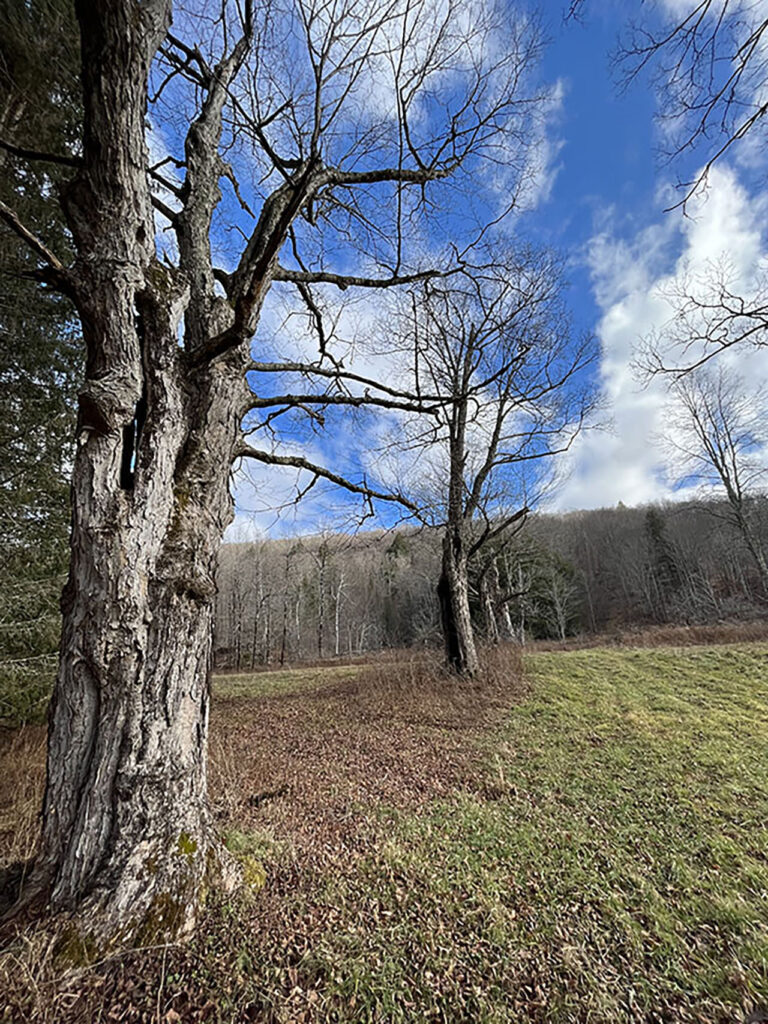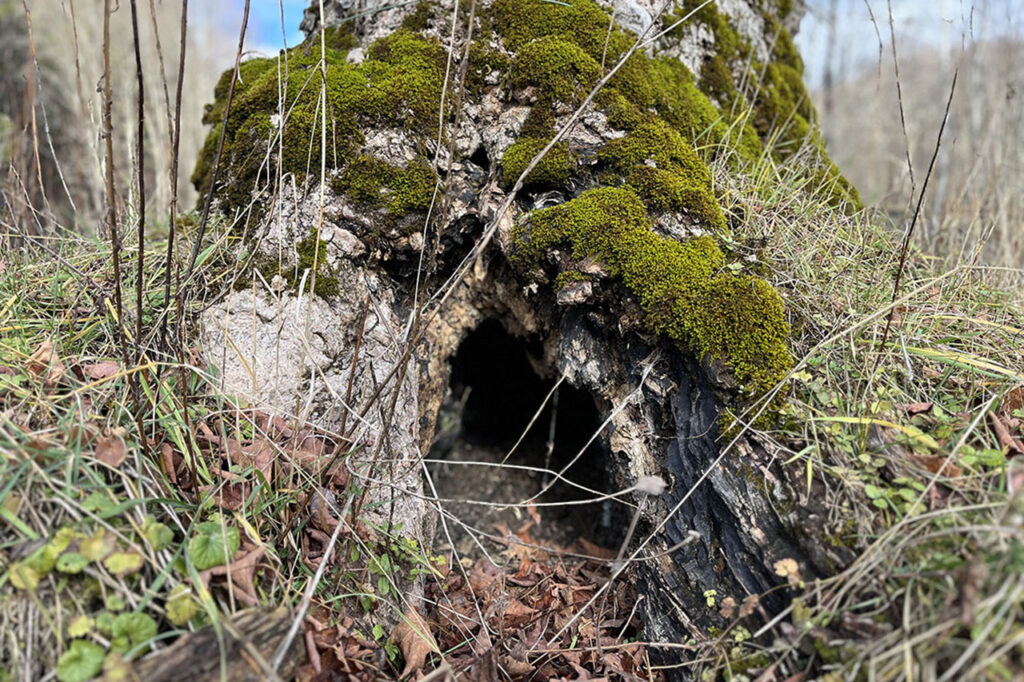Off the paved road, across the creek, approaching the maintained fields of Finch Hollow, we pass the single-file line of wolf trees. Like aging military generals, they stand straight, tall, and, at the same time, weathered and bent, encapsulating the history of the place.

Called “pasture trees” by Henry David Thoreau, they’re largely found on abandoned agricultural sites where farms were left to regrow into forest stands. The large, low branches of wolf trees break up the monotony of the straight, vertical stripes in the surrounding young forest. Just as common are the trees planted for decoration around homesites like we see on Finch Hollow: apple trees for utility or maples and oaks for a grand entrance. Like stones commonly found surrounding a property, these trees were left to mark boundaries and corners.
Often hundreds of years old, their age is typically difficult to measure as the center, or “heart,” of the tree is commonly rotten.



They’ve been accused of stealing resources from more useful, young hardwoods, like wolves surrounding a productive pasture. Wolf trees are typically culled to make way for crop trees; however, we’ve begun to understand them more from an ecological perspective. Often used by small mammals and birds for nesting and storage, they also harness the “second forest floor.” In many crotches and large low branches, soil builds up and germinates dropped seeds, and moss often finds a quiet place to reproduce.
Aldo Leopold captures better than I ever could the significance of these trees in his essay “Good Oak.” After a lightning strike damages an old oak tree on the edge of his property, he decides to cut the tree down for firewood: “Fragrant little chips of history spewed from the saw cut…we sensed that these two piles of sawdust were something more than wood: that they were the integrated transect of a century; that our saw was biting its way, stroke by stroke, decade by decade, into the chronology of a lifetime, written in concentric annual rings of good oak.”
See more of Finch Hollow here.
